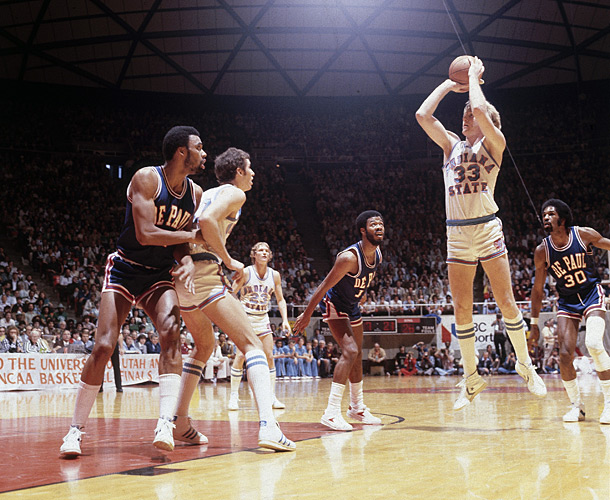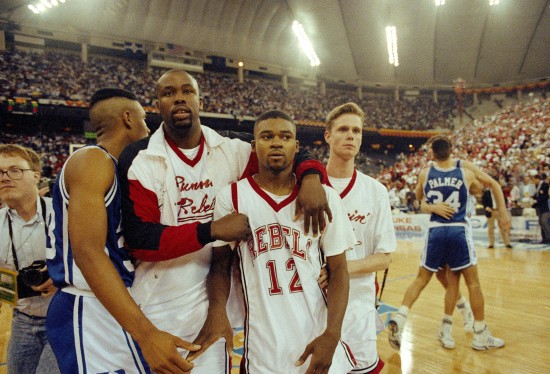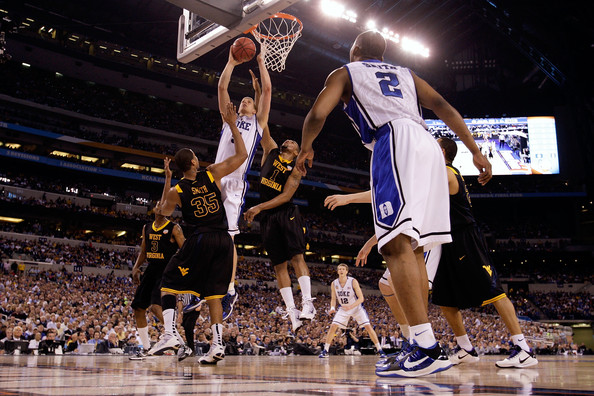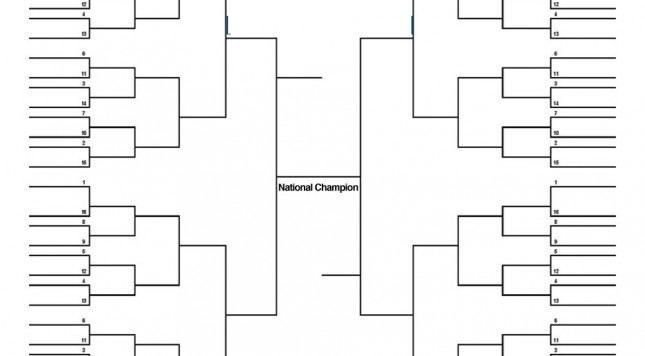The practice of re-seeding the Final Four is not being actively discussed. It’s not likely to happen at any point in the near or moderately distant future.
We all have our opinions on the matter, but this won’t be an editorial urging one position over another.
Simply sit back and contemplate how different the Final Four might have been if it had been re-seeded ever since 1979, when the NCAA tournament was first seeded as a whole (at least in a clean, numerical manner; 1978 was a one-time grouped seeding system which really didn’t amount to a fluid, integrated bracket).
Away we go:

Indiana State played DePaul in the 1979 Final Four national semifinals. Re-seeding would have slid ISU over to a meeting with Penn. DePaul would have faced Michigan State.
1979: Indiana State was the only 1 seed in that year’s Final Four. The Sycamores would have played Penn, a 9 seed. DePaul would have faced Michigan State in the other national semifinal — both teams were 2 seeds and essentially would have represented the “2-versus-3” semifinal while ISU-Penn would have become the 1-4 semifinal. That represents a change from the actual semifinals. ISU nipped DePaul, while Michigan State delivered a massive beatdown to Penn.
1980: Louisville would have played UCLA in the semis, not the final, under a re-seed. Iowa would have played Purdue in the semis, not the third-place game (which ended in 1981).
1981: This Final Four would not have needed a re-seed. Virginia and LSU were both 1 seeds, and the tournament did not have a 1-68 (or in this case, 1-48) seed list at the time. Teams on the same seeding line could reasonably have been used interchangeably. Hence, there was no need for a re-seeded Final Four in this case. You’ll see other instances such as this one, with two or more teams sharing a seed line. Re-seeding was not meant to intervene in such cases.
1982: No need for a re-seed.
1983: Houston would have played North Carolina State in the semis, while Louisville would have played Georgia. The Louisville-Houston national semifinal would have had a chance to become the national title game.
1984: Virginia would have played either Kentucky or Georgetown, not Houston. The Cougars would have played Kentucky or Georgetown, but not Virginia.
1985: Villanova would have played St. John’s or Georgetown in the semis, but not Memphis, a 2 seed compared to the 1 seeds from the Big East. Memphis would have played the Johnnies or the Hoyas, but not Villanova.
1986: LSU would have played Duke or Kansas, but not Louisville. The Cardinals would have played Duke or Kansas, but not LSU.
1987: Providence would have played Indiana or UNLV, but not Syracuse. The Orange would have played Indiana or UNLV, but not the Friars.
1988: Kansas and Oklahoma would have played in the semis, not the final. Arizona and Duke would have played in the other semifinal.
1989: No re-seed.
1990: No re-seed.

A re-seeded Final Four would have meant that this photo could not have emerged on Semifinal Saturday. It only could have taken place on Championship Monday.
1991: UNLV would have played Kansas, while North Carolina would have played Duke.
1992: Duke would have played Michigan in the semis, while Cincinnati would have played Indiana.
1993: No re-seed.
1994: Arkansas would have played Florida, while Arizona would have played Duke.
1995: No re-seed.
1996: Mississippi State would have played Kentucky or UMass, but not Syracuse. The Orange would have played Kentucky or UMass, but not MSU.
1997-2001: No re-seed in any of these Final Fours.

This would not have been a semifinal in the 2002 Final Four with a re-seed. Photo courtesy of Getty Images
2002: Indiana would have played Kansas or Maryland, but not Oklahoma. The Sooners would have played KU or Maryland, but not Indiana.
2003: No re-seed.
2004: Duke would have played Georgia Tech in the semis, and Connecticut would have played Oklahoma State.
2005: No re-seed.
2006: George Mason would have played UCLA, and LSU would have played Florida. (Maybe the Final Four would have been good that year. I still get headaches thinking about it.)
2007-2009: No re-seed.
2010: Duke would have played Butler or Michigan State in the semis, while West Virginia would have played Butler or MSU as well… just not Duke.

West Virginia and Duke would not have met in the 2010 national semifinals with a re-seeded Final Four.
2011: UConn would have played VCU, and Kentucky would have played Butler.
2012 and 2013: No re-seed.
2014: Florida would have played Kentucky, and Wisconsin would have played UConn.
2015: Kentucky would have played Michigan State, and Duke would have played Wisconsin. This is a case in which the 1-68 seed list would have been able to address a situation in which multiple teams stood on the same seed line.
2016: Nope — no need for a re-seed this year. North Carolina-Syracuse is the 1-4 semifinal, Oklahoma-Villanova the 2-3 semifinal.


